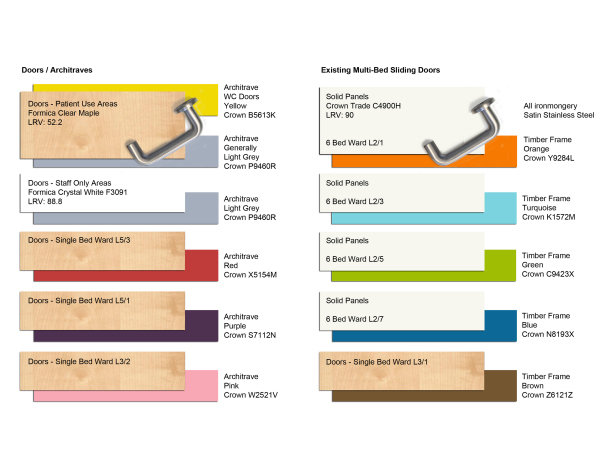News
Designing environments for people with Dementia
Avoiding gimmicks and doing the right thing.
As the aging population continues to increase, creating environments suitable for people suffering with dementia is set to become a major consideration in the design of not only hospitals and care homes but also housing, commercial and public facilities.
I recently attended the Kings Fund conference on the Design of Environments for People with Dementia. The two day course included a series of lectures from leaders in the field, critical examination of recent ‘dementia friendly’ projects and a number of interactive exercises. One of which involved undertaking simple household tasks whilst wearing sensory deprivation devices, which limited eyesight, hearing and touch to give an impression, for a very brief period, of what an elderly person suffering with dementia may have to deal with. Most of the delegates were estates managers, care givers, nurses and hospital representatives from around the country who all offered a unique insight into the day to day problems encountered by dementia sufferers and the requirements of the environment they inhabit.
One of the most interesting discussions that took place was regarding the recent trend to create simulated spaces within healthcare buildings, such as a pub or post office, that allow patients to experience once familiar activities. In settings such as care homes this can have a very positive impact, offering a link back to a time when residents had more mobility and providing important opportunities for social interaction. However the argument was put forward that patients in acute settings such as hospital wards, who are often confused, need to be aware of where they are. One of the delegates cited an artwork installation where life sized objects such as post boxes and a bus stop were painted on the walls of one of their wards as part of ‘dementia friendly’ artwork. In this instance patients became very confused by a post box that didn’t allow you to post any letters and a bus stop where a bus would never arrive.
What the course re-emphasised to me was the importance of considering who you are actually designing for, combined with careful examination of the research in the field and listening intently to your client. It also brought to mind a quote that I had read recently on the role of architecture:
‘Architects are not acting for themselves but on behalf of others, and this means acting ethically.’
-Jeremy Till, Architecture Depends
In dementia friendly ward projects that we have undertaken at LSI, we determined with our clients that what is important in acute settings is legibility, comfort, spaces for social interaction and consideration of the perceptions of the end user. Good dementia design can be as simple as replacing a confusing patterned floor finish that was causing patient falls with a more familiar material, making WC’s easier to locate, using appropriate artwork and introducing clear way finding devices. We found that considerate selection of materials and the input of trust art consultants can produce uplifting spaces that avoid confusion and encourage wellbeing and independence in patients. Early feedback from the most recent refurbishment at Addenbrooke’s has been very positive.

Addenbrooke’s Dementia Ward Before

Addenbrooke’s Dementia Ward After
‘The ward moved in today and the staff are so pleased with the results. I have heard lots of wows and other wards are saying that they are jealous, so quite a result!’
-Katherine Fitzwilliams, Project Manager, Addenbrooke’s Hospital.
Our dementia specific input to the West Newton ward at Queen Elizabeth Hospital in King’s Lynn will begin on site in 2015 and as we continue to design dementia friendly environments we take on board the lessons learned from each project and bring that experience and expertise the next one.

QEH Colour Wayfinding Proposal
By 2015 850,000 people in the UK will have dementia and by 2025 that figure will have reached 1 million. The importance of getting dementia friendly design right cannot be underestimated. The Kings Fund has recently published accessible assessment tools that can be downloaded for free from their website which are well worth a look weather you are a designer or a client.

